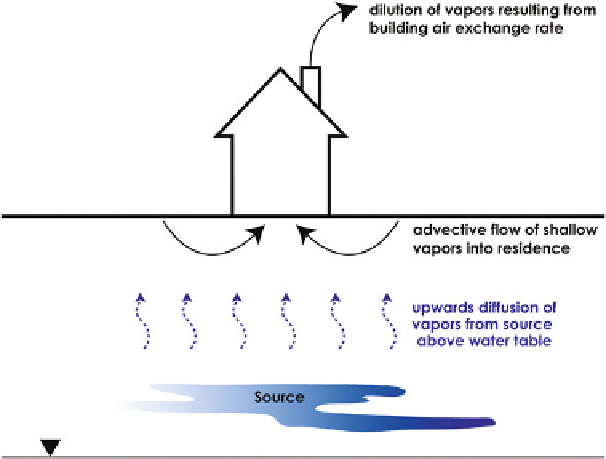Environmental Engineering Reference
In-Depth Information
Fig. 10.1
Simplified conceptual model of vapor intrusion
basis for one. A conceptual model combines available site-specific information with
theoretical considerations and experience from similar sites to form an expectation
of site conditions. As site-specific data are collected, they are compared with the
conceptual model and revisions are made as needed. Conceptual models are often
described using a source-pathway-receptor framework, which has been adopted
herein. Thus, the conceptual model evolves over time as information is collected,
becoming more comprehensive, and sometimes more complex in the process.
The most common conceptual model for subsurface vapor intrusion considers a
source of contaminants at some depth below a building, upward diffusion of vapors
at steady-state, convection into the building from the close proximity of the floor
slab, and dilution within the building due to ventilation. This simplified conceptual
model is shown schematically in Fig.
10.1
. However, several other mechanisms may
be important, depending on site-specific conditions, as discussed further below.
10.2.1 Vapor Source
The location of the vapor source relative to the water table or capillary fringe can
be important when assessing vapor intrusion at a particular site. In general, a source
can exist above the saturated zone, just above the water table (e.g., non-aqueous
phase liquid (NAPL) floating on the water table or disseminated within the capillary
fringe) or in the saturated zone (e.g., a soluble groundwater plume).

Search WWH ::

Custom Search